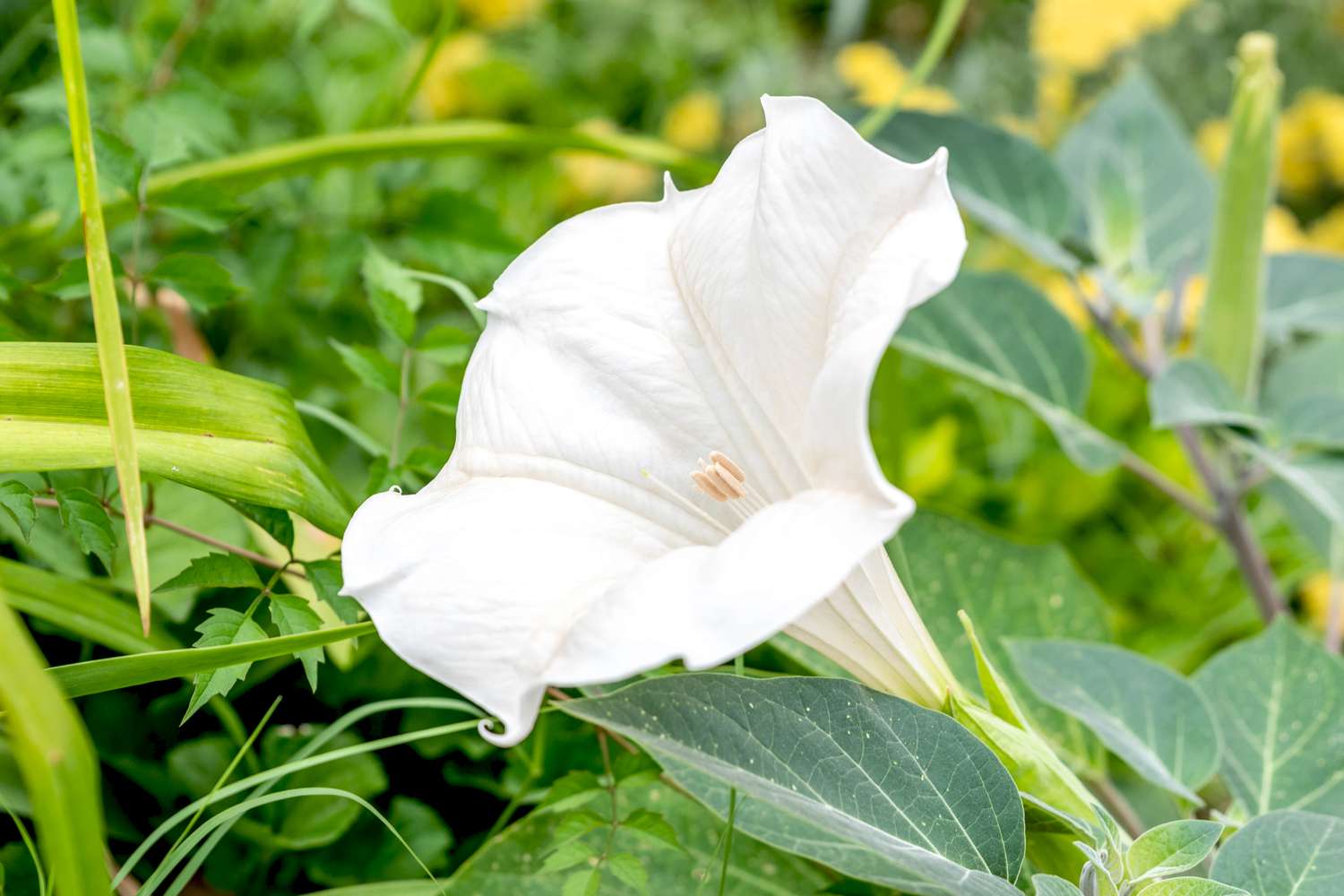
Moonflower, also known as Ipomoea alba, is a fascinating and enchanting plant that captures the attention of all who encounter it. With its large, fragrant, and luminous white flowers that bloom at night, the Moonflower is a true marvel of nature. But there is more to this captivating plant than meets the eye.
In this article, we will explore 18 surprising facts about Moonflower that will leave you in awe of its beauty and botanical wonders. From its nocturnal blooming habits to its rich history in various cultures, Moonflower has plenty of secrets waiting to be uncovered.
So, prepare to embark on a journey of discovery as we delve into the world of Moonflower and unravel the mysteries that make this plant truly extraordinary.
Key Takeaways:
- Moonflowers bloom at night, emitting a sweet fragrance that attracts moths. Their rapid growth and large heart-shaped leaves make them a magical addition to any garden, but beware, they are toxic if ingested.
- Moonflowers symbolize love and romance, and their seeds can sprout quickly. They are versatile climbers, perfect for container gardening, and their leaves can be used to make a soothing tea for relaxation and sleep.
Nighttime Blooms
One of the most enchanting aspects of moonflowers is their nocturnal blooming. These flowers open up after dusk and release an intoxicating fragrance that fills the night air with their sweet scent.
Resemblance to the Moon
Moonflowers earned their name due to their striking resemblance to the moon. Their large, trumpet-shaped white flowers reflect the moon’s luminosity, creating a celestial atmosphere in any garden.
Scientific Name: Ipomoea Alba
Moonflowers belong to the Ipomoea alba species. The scientific name “Ipomoea” is derived from the Greek words “ips” (worm) and “homoios” (resembling), referring to the twining habit of the plant.
Native to the Americas
Moonflowers are native to the Americas, particularly North and South America. They can be found growing in tropical regions, including parts of the United States, Mexico, and Central and South America.
Vining Plant
Moonflowers are vining plants that can climb and reach impressive heights. With their vigorous growth, they can quickly cover trellises, fences, and arbors, creating a stunning vertical display.
Fragrant Blossoms
The blossoms of moonflowers emit a delightful fragrance that lingers in the night air. The sweet scent attracts nocturnal pollinators, such as moths and bats, which help in the flower’s pollination.
Nighttime Pollinators
Moonflowers have evolved to attract specific nighttime pollinators, such as Sphinx moths, that are active during their blooming hours. The moths are drawn to the flower’s pale color and intoxicating aroma.
Rapid Growth
When provided with the right conditions, moonflowers can exhibit rapid growth. Their vines can grow several inches in a day, creating a lush and dense foliage that adds an element of privacy to your garden.
Sensitivity to Light
Moonflowers are highly sensitive to light. They begin to close their blossoms as soon as the first rays of sunlight touch them, ensuring protection and safeguarding their delicate petals from damage.
Large Heart-Shaped Leaves
The moonflower vine is adorned with large heart-shaped leaves, adding visual interest to the plant even when it’s not in bloom. These lush green leaves provide shade and shelter to the flowers below.
Fast Seed Germination
Moonflower seeds have a remarkable ability to germinate quickly. Under optimal conditions, they can sprout within a week, allowing gardeners to enjoy the beauty and fragrance of these flowers in a relatively short amount of time.
Symbolism of Love and Romance
In many cultures, moonflowers symbolize love, romance, and beauty. They are often associated with moonlit walks and romantic encounters, making them a popular choice for weddings, anniversaries, and other special celebrations.
Medicinal Uses
Moonflowers have been traditionally used for their medicinal properties in various cultures. They have been utilized for their soothing effects, treating conditions such as inflammation, arthritis, and skin irritations.
Toxicity Warning
While moonflowers possess many remarkable qualities, it is essential to note that all parts of the plant are toxic if ingested. It is crucial to keep them out of reach of children and pets.
Container Gardening
If you have limited space, fear not! Moonflowers can thrive in containers, allowing you to enjoy their beauty on balconies, terraces, or patios. Just make sure the container is large enough to accommodate their vigorous growth.
Versatile Climbers
Moonflowers are not limited to climbing on trellises alone. They can also wrap themselves around other sturdy structures, such as lamp posts, pergolas, and even trees, showcasing their versatility in the garden.
Self-Seeding
Moonflowers have the ability to self-seed, meaning they can drop their seeds and grow new plants on their own. This characteristic can lead to beautiful surprises in the garden, as new moonflowers may appear in unexpected locations.
Moonflower Tea
The leaves of the moonflower plant can be used to make a fragrant and soothing tea. Moonflower tea is said to have calming properties and is often enjoyed before bedtime to aid in relaxation and sleep.
With these 18 surprising facts about moonflowers, we have delved into the enchanting world of this captivating flower. Whether you decide to grow them in your garden or simply appreciate their beauty, the moonflower will undoubtedly leave you spellbound with its mesmerizing blossoms and fragrant allure. So, embrace the magic that moonflowers bring and let them illuminate your nights with their celestial radiance.
Conclusion
In conclusion, Moonflower is a fascinating and enchanting plant that has captivated people for centuries. Its unique characteristics, beautiful blooms, and intriguing facts make it a beloved addition to gardens and landscapes. From its nocturnal bloom to its symbolic meanings, Moonflower continues to surprise and delight both gardeners and nature enthusiasts alike. So, next time you spot a Moonflower vine, take a moment to appreciate the magic and wonder that this remarkable plant brings to the world.
FAQs
1. What is the scientific name of Moonflower?
Moonflower’s scientific name is Ipomoea alba.
2. Does Moonflower only bloom at night?
Yes, Moonflower blooms exclusively at night and closes up during the day.
3. Is Moonflower toxic to humans or pets?
Yes, Moonflower is toxic if ingested, so it is important to keep it away from children and pets.
4. Can Moonflower grow in containers?
Yes, Moonflower can be grown in containers, as long as they are large enough to accommodate its vigorous growth.
5. How long does it take for Moonflower seeds to germinate?
Moonflower seeds typically germinate within 5 to 10 days under favorable conditions.
Was this page helpful?
Our commitment to delivering trustworthy and engaging content is at the heart of what we do. Each fact on our site is contributed by real users like you, bringing a wealth of diverse insights and information. To ensure the highest standards of accuracy and reliability, our dedicated editors meticulously review each submission. This process guarantees that the facts we share are not only fascinating but also credible. Trust in our commitment to quality and authenticity as you explore and learn with us.


